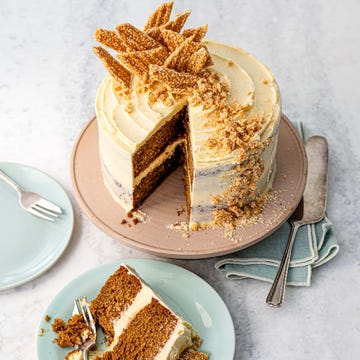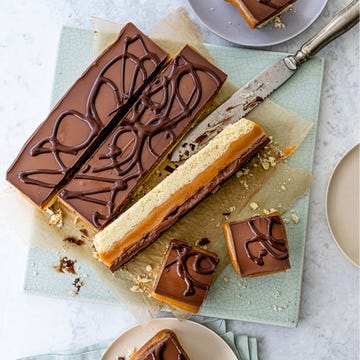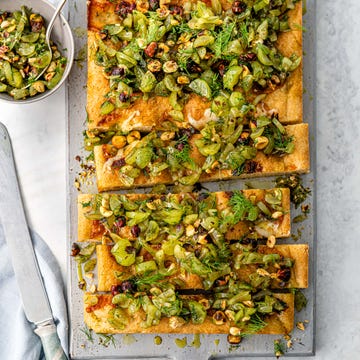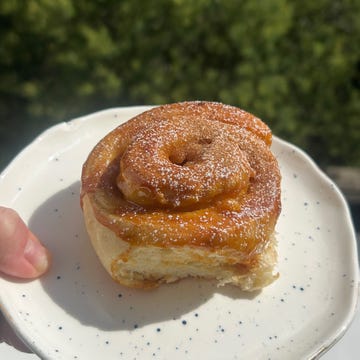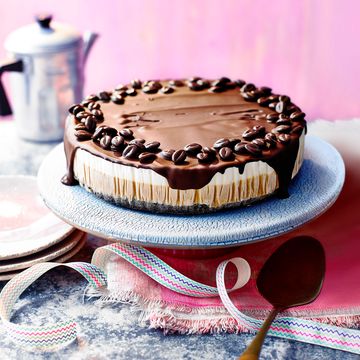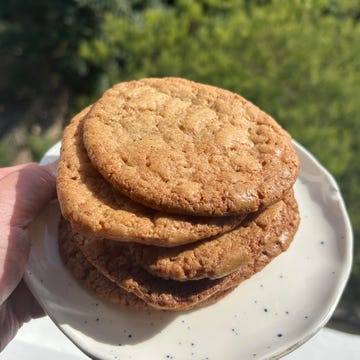Rhubarb is having a moment right now and this is why
Its delightful pink hues have captured the nation's heart, but what will you make with it?
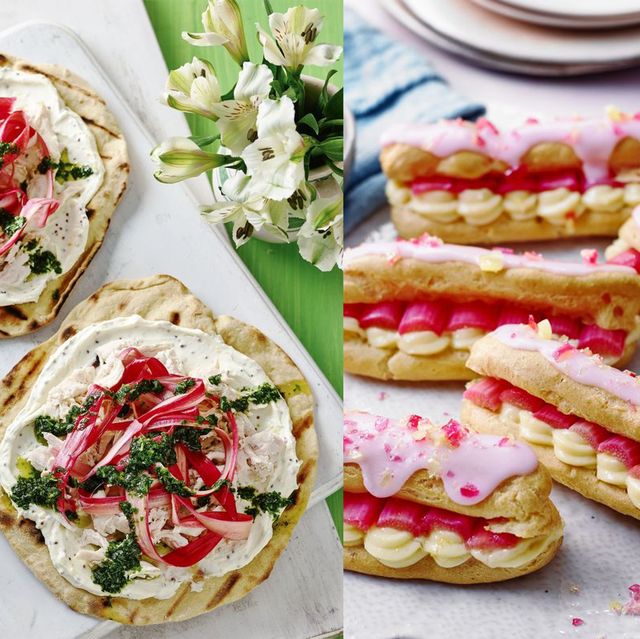
The desire for nostalgic and seasonal ingredients is at an all time high, hence the resurgence in the popularity of rhubarb which imbues a sense of cosy cooking. We're sure it's beautiful pink colour has something to do with it too...
One of the tell-tale signs that early spring is among us is the arrival of the beautiful and vibrant rhubarb stalks. These wonderful leafy stalks can vary in colour through its growing season. From crimson red, to speckled light pink, all the way to a light green. It adds a wonderfully sweet yet tart flavour to recipes.
What is forced rhubarb?
Rhubarb farmers will first grow this variety outside for two years, so the exposure to the frost toughens their stalks. Then, they're removed from the ground and moved into a dark forcing shed where heat is applied. The lack of light and added heat means the plant grows quickly in search of light. Apparently they grow so quickly in a day that you can even hear them squeak, creak and pop!
When is rhubarb season?
It arrives early in the year between January and March for forced rhubarb. They are lighter in colour and have a more tender and delicate flavour than those grown in the open (which tend to be thicker-stemmed, bright red, and appear from April to June).
How to use rhubarb?
It can look a little intimidating at first, but once you've tried it, you'll see how easy it is to make an array of dishes to make the most of the wonderful rhubarb season.
It can be used to make jams or compotes, pannacotta, eclairs, jelly, cakes, meringue pie, ice cream, cocktails and you can even pickle it for a savoury twist.
We recommend you wash the stalks and make sure to discard any leaves. If the rhubarb is young and tender (so lighter in colour), chop them into 1-inch pieces and they are ready to be cooked. If you see any fibrous strings on the outside, peel them off first like you would with celery before chopping.
If you want to make the most of your bounty, you can also freeze rhubarb, meaning you can enjoy it all year long.
How to cook rhubarb
There are two classic ways to cook rhubarb – bake or lightly stew. Whichever option you choose, keep an eye on the cooking time. Overcooking rhubarb will give a mushy result but don't worry as it'll still taste delicious and can be used as a compote, which is the perfect accompaniment with your breakfast yoghurt and granola.
To cook, we recommend to simply keep it at a low simmer in a saucepan with sugar, a splash of water, and a generous squeeze of orange juice. For a lightly spiced version, add in a cinnamon stick, couple of cloves and a star anise. It should take no more than 8 to 10 minutes for the rhubarb to be tender – a knife should go through it with no resistance.
Have a go at playing around with different flavour combinations. Why not stir through some vanilla, candied ginger, citrus zest, orange blossom or rosewater, or chopped frozen berries after the rhubarb has finished cooking?
The finished result can be used to fill an elegant sponge cake for afternoon tea, or just elevate a simple weeknight dessert when paired with a scoop of clotted cream or vanilla ice-cream.
Ready to give rhubarb a go? We've rounded up our best rhubarb recipes for you to try. From rhubarb gin and plum cake to pickled rhubarb and spelt flatbreads. Plus, a few of our favourite rhubarb cocktails for good measure.
A crack team of highly skilled food content producers, the GH Kitchen Team are Good Housekeeping’s resident recipe developers and all-round food obsessives. GH Kitchen Director Sarah Akhurst is our resident hosting pro and loves nothing more than putting on a foodie feast for friends. Senior Cookery Writer Alice Shields is a former pastry chef and baking fanatic who loves making bread and would have peanut butter with everything if she could. Lover of all things savoury, Senior Cookery Writer Grace Evans can be found eating nocellara olives at every opportunity, and will take the cheeseboard over dessert any time. With a wealth of professional kitchen experience between them, they’re dedicated to ensuring every Good Housekeeping recipe is the best it can be, so you can trust they’ll work every single time.


Gochujang blondies recipe

Pear and chocolate crumble recipe

Puff pastry recipes

Simple blackberry and almond traybake recipe





















